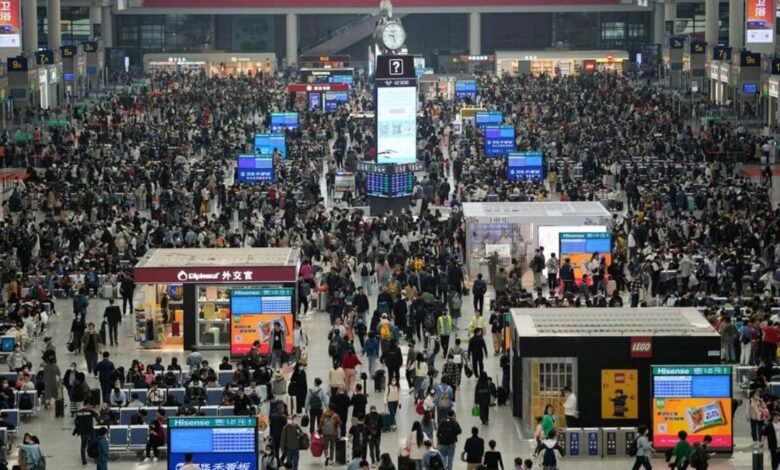What’s behind high travel and low spending? – First post

Despite the increase in travel during the May Day holiday, spending remained subdued. Reuters
In communist China, the first day of May – Labor Day – actually marks the beginning of a five-day holiday. During the recent May Day holiday in China, there was a notable increase in travel, with millions of people taking advantage of the long holiday. This increase in travel can be seen as a positive sign, indicating a recovery from pandemic-era restrictions.
However, despite the high number of travelers, there is an underlying trend that mitigates this good news: a significant concern regarding consumer spending patterns.
We dive into the specifics of these trends and explain why the numbers for this Labor Day holiday are disappointing, despite the high volume of travel.
The purpose of the May Day holiday
The 5-day vacation around May Day is created by reshaping working days.
Like every year, also in 2024, May 1st, Wednesday, was a public holiday due to Labor Day. May 4th and 5th were days off because of the weekend. To ensure that May 2nd is a public holiday, the previous weekend, that is, April 28th, Sunday, was a working day. Likewise, for May 3rd, the following weekend, May 11th, a Saturday, will be a working day.
The aim of reorganizing working days is to give Chinese workers the opportunity to make vacation plans during their five consecutive days off to increase consumer spending in the country. The Chinese government hoped to boost tourism and the economy by encouraging millions of families to travel during the holiday season.
Here’s how that worked out this year.
An increase in tourism
China’s Ministry of Culture and Tourism reported a staggering 295 million trips taken in mainland China during the holiday, marking a 28% increase compared to the 2019 Labor Day period, which lasted just four days. Despite this increase in travel, the economic benefits were not as pronounced as expected. This year’s tourism revenue reached 166.89 billion yuan ($23.6 billion), which, although 13.5% higher than in 2019, shows that the increase in revenue did not correspond to the increase in travel.
Drop in spending
Average spending per trip has decreased notably; tourists spent about 565.73 yuan ($80) per trip, down 6 percent from five years ago, according to CNN.
An estimate for Reuters suggests that average spending has fallen much more. Compared to pre-COVID levels in 2019, per capita spending during the holiday period fell 11.5 percent, the media company said.
Although there was a 12.7% increase in total spending compared to last year shortly after China lifted COVID-19 restrictions, the reduction in per capita spending indicates cautious consumer behavior.
Instead of flocking to bustling metropolises like Beijing and Shanghai, many travelers have opted for smaller, tier 3 cities and lesser-known cities. This trend is largely driven by cost considerations, as these destinations generally offer more affordable travel and accommodation options.
Reasons for decreased spending
There are several reasons for this spending restraint. They reflect broader economic challenges in China, the world’s second-largest economy. A significant factor is the ongoing crisis in the real estate sector. Construction and real estate are a major source of employment and wealth generation in China. A record recession in this sector had a serious impact on family consumption habits, as well as increased consumer confidence.
Furthermore, job security has become a major concern for many Chinese. The economic slowdown has led to greater job uncertainty, making consumers hesitant to spend. This economic scenario is crucial to understanding why, despite the freedom to travel and the desire for post-pandemic experiences, spending has not recovered to expected levels.
Consumer sentiment is further highlighted by a survey by the People’s Bank of China, which found that less than one in four residents wanted to spend more, while a growing percentage of the urban population preferred to save during the first quarter of the year. This shift in consumer priorities from spending to saving highlights the prevailing economic uncertainty and the direct impact it has on consumer behavior.
Additionally, the expansion of China’s high-speed rail network and increased car ownership have made these remote destinations more accessible.
With contributions from agencies
Find us on YouTube
Subscribe




